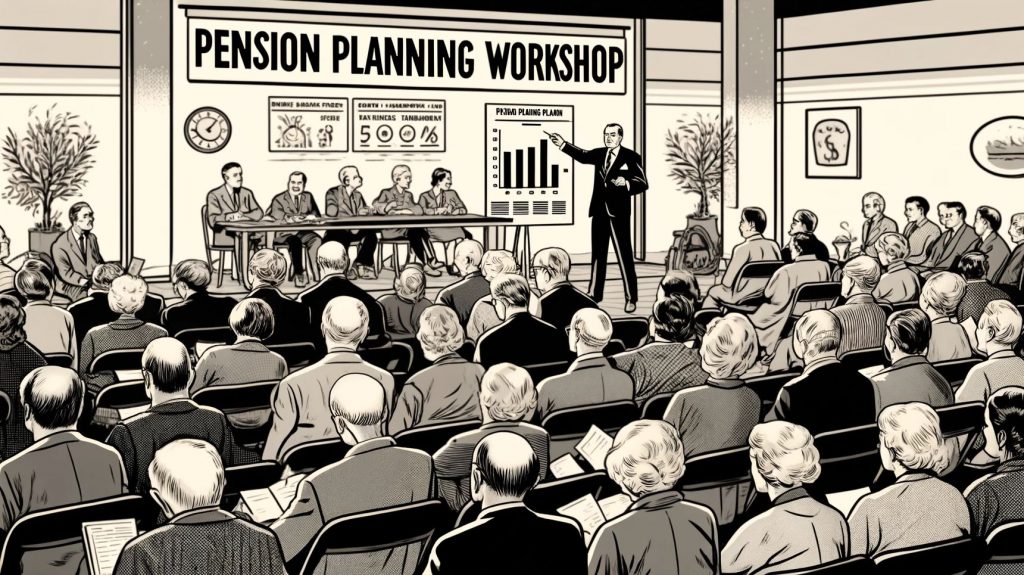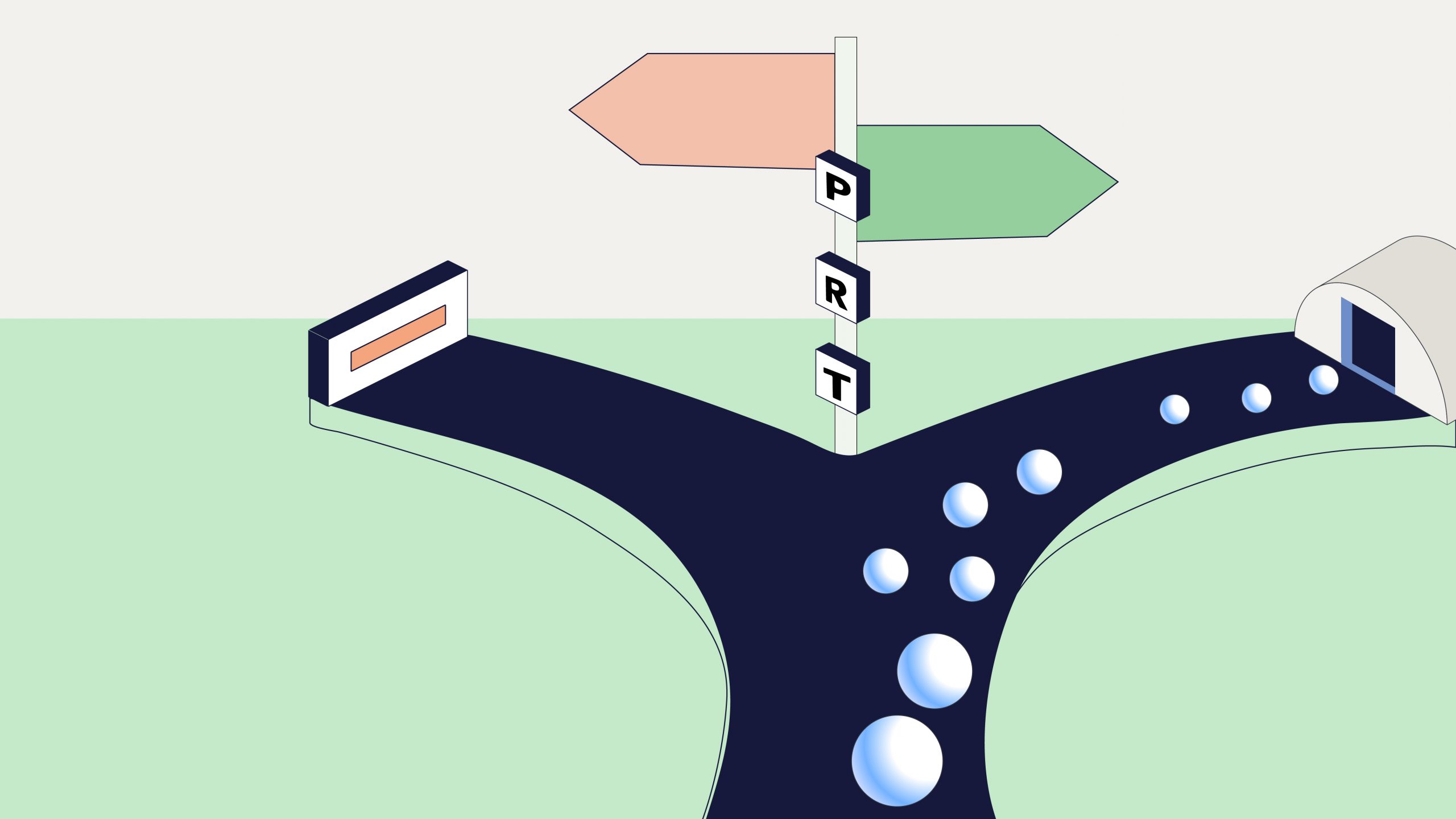Picture this – you’ve worked for a company for decades, diligently contributing to your pension plan, counting on it to secure your retirement. You have attended countless seminars and workshops, poring over statements and projections, all pointing to a comfortable post-work life. But what happens when your employer decides to terminate the plan or lift out a group of participants? Suddenly, the ground beneath your feet shifts, and the future you have been working towards becomes uncertain.

This is the reality many workers face today as companies increasingly turn to pension risk transfer strategies. In a world where corporate balance sheets are scrutinized with a fine-tooth comb, pension liabilities have become the elephant in the room – a massive, unpredictable burden that can make or break a company’s financial health. And so, in a bid to rid themselves of this risk, more employers are opting to terminate their pension plans or lift out certain groups of participants, transferring the liabilities to insurance companies or other entities.
In this article, we will explore the motivations behind plan terminations and lift-outs, examining the legal and regulatory framework that governs these strategies. We will walk through the process step-by-step, from participant notification to the distribution of benefits, and highlight the potential risks and challenges for both companies and employees.
Understanding Plan Terminations and Lift-outs

Definition of plan terminations
A plan termination is a process by which a company permanently ends its pension plan, either voluntarily or involuntarily. When a plan is terminated, the sponsoring employer is relieved of its obligation to provide future benefits to participants. There are two types of plan terminations:
- Standard termination: This occurs when a plan has sufficient assets to cover all benefits owed to participants. The plan sponsor distributes the assets to participants through lump-sum payments or annuity contracts.
- Distress termination: This occurs when a plan does not have enough assets to cover its liabilities, and the sponsoring employer is in financial distress. The Pension Benefit Guaranty Corporation (PBGC) or a similar entity takes over the plan and pays benefits up to statutory limits.
Definition of Lift-outs
A lift-out, also known as a partial plan termination or spinoff termination, is a strategy where a portion of a pension plan’s liabilities and assets are transferred to an insurance company or other entity. Typically, lift-outs target a specific group of participants, such as retirees or vested terminated employees. The goal is to reduce the plan’s overall risk profile and minimize the volatility of funding requirements.
Context within the broader pension risk transfer landscape
Plan terminations and lift-outs are two key strategies within the broader context of pension risk transfer (PRT). PRT refers to the various methods employed by plan sponsors to mitigate the risks associated with defined benefit pension plans, such as market volatility, longevity risk, and regulatory uncertainties. Other PRT strategies include:
- Buyouts: Purchasing annuity contracts from insurance companies to cover pension obligations.
- Buy-ins: Purchasing annuity contracts to cover a portion of the plan’s liabilities while retaining the assets in the plan.
- Longevity swaps: Hedging the risk of participants living longer than expected through derivative contracts.
A brief history of plan terminations and Lift-outs
Plan terminations have been a part of the pension landscape since the enactment of the Employee Retirement Income Security Act (ERISA) in 1974. However, the use of lift-outs as a risk transfer strategy has gained prominence in recent years as companies look for more targeted ways to manage their pension liabilities.
One of the earliest and most significant examples of a lift-out occurred in 2012, when General Motors transferred $26 billion of its pension obligations to Prudential Insurance Company through a combination of lump-sum payments and annuity purchases. This transaction, which affected approximately 118,000 salaried retirees, was the largest pension buyout in U.S. history at the time.
Since then, lift-outs have become an increasingly popular tool for plan sponsors seeking to de-risk their pension plans.
Motivations Behind Plan Terminations and lift-outs

Companies’ perspective
- Reducing pension liabilities and financial risk
For many companies, defined-benefit pension plans have become a significant financial burden. These plans expose sponsors to various risks, including market volatility, interest rate fluctuations, and longevity risks. By terminating a plan or lifting out a portion of its liabilities, companies can reduce their overall pension obligations and mitigate the associated risks.
Moreover, the premiums paid to guaranty programs have increased significantly in recent years, adding to the cost of maintaining defined benefit plans. By terminating a plan or lifting out a portion of its liabilities, companies can reduce or eliminate these premium payments, freeing up cash for other business purposes.
- Focusing on core business operations
Pension plan management can be a complex and time-consuming task, requiring specialized expertise and resources. By transferring pension liabilities to an insurance company or other entity, companies can focus on their core business operations and strategic objectives.
This is especially relevant for companies in industries undergoing rapid change or facing intense competition. By removing the distraction of pension plan management, companies can allocate more resources to innovation, growth, and adaptation to evolving market conditions.
- Improving financial flexibility and credit ratings
Pension liabilities can have a significant impact on a company’s financial flexibility and credit ratings. High pension obligations can limit a company’s ability to invest in new projects, pursue mergers and acquisitions, or return cash to shareholders through dividends or share buybacks.
By reducing pension liabilities through plan terminations or lift-outs, companies can improve their financial flexibility and potentially enhance their credit ratings. This can lead to lower borrowing costs, better access to capital markets, and increased shareholder value.
Employees’ perspective
- Potential impact on retirement security
When a plan is terminated, participants may receive lump-sum payouts or annuity contracts, which can alter the nature and timing of their retirement benefits.
Lump-sum payouts can be problematic for some participants. While they provide immediate access to retirement funds, they also transfer the responsibility of managing those funds to the individual. This can be challenging for participants who lack financial expertise or may be tempted to spend the money rather than preserve it for retirement.
Annuity contracts, on the other hand, provide a guaranteed stream of income in retirement but may offer less flexibility than a traditional pension plan. Participants may also face the risk of the insurance company becoming insolvent, although state guaranty associations provide some protection in such cases.
- Changes in benefit structure and payout options
Plan terminations and lift-outs can also result in changes to the benefit structure and payout options available to participants. For example, a terminated plan may offer different annuity options or have different early retirement provisions than the original plan.
In some cases, lift-outs may target specific groups of participants, such as retirees or vested terminated employees, leaving active employees in the remaining plan. This can create disparities in the benefits and risks faced by different participant groups.
Moreover, the terms of the annuity contracts purchased during a plan termination or lift-out may differ from those of the original plan. Participants may face changes in cost-of-living adjustments, death benefits, or other plan features, which can impact their retirement income and planning.
The Process of Plan Terminations and Lift-outs

Steps involved in plan terminations
- Notifying participants and regulators
Plan sponsors must provide clear, timely communication to all affected parties, including active employees, retirees, beneficiaries, and regulators. The notice should include key information such as the proposed termination date, reasons for the termination, and participant rights. Specific requirements for notification may vary by jurisdiction, but plan sponsors must provide written notice well in advance of the termination date and comply with regulatory filing or disclosure obligations.
- Calculating and distributing benefits
Once the notification process is complete, the plan sponsor must calculate the benefits owed to each participant under the terms of the plan. This involves determining the present value of each participant’s accrued benefits using legally mandated assumptions, such as mortality rates and interest rates.
The plan sponsor must then distribute the benefits to participants in one of two forms:
Lump-sum payment: Participants may receive a single payment representing the full value of their accrued benefits. This option is typically available only if the present value of the participant’s benefit is below a certain threshold (e.g., $5,000).
Annuity contract: The plan sponsor may purchase annuity contracts from an insurance company to provide participants with a guaranteed stream of income in retirement. The annuity contract must meet certain legal requirements, such as providing survivor benefits and not discriminating based on age or health status.
- Filing required paperwork and reports
After distributing benefits, the plan sponsor must complete the remaining regulatory filings and disclosures to finalize the termination. This may include certifying that all benefits have been distributed in accordance with plan terms and regulations, transferring remaining assets to the selected distribution vehicle, and filing final reports with the relevant authorities.
Plan sponsors should work closely with legal counsel, actuaries, and other advisors to ensure compliance throughout the termination process.
Steps involved in lift-outs
- Selecting a group of participants for the lift-out
The first step in a lift-out transaction is to identify the group of participants whose benefits will be transferred. This selection process is typically based on factors such as age, employment status, and benefit amount.
Common participant groups targeted for lift-outs include:
Retirees: Transferring the benefits of current retirees can significantly reduce the plan’s liabilities and administrative costs.
Vested terminated participants: These are former employees who have earned a vested benefit under the plan but have not yet begun receiving payments.
Active employees: In some cases, a plan sponsor may choose to transfer the benefits of a subset of active employees, such as those in a particular division or location.
The selection of participants for a lift-out must comply with applicable regulations, such as the nondiscrimination rules under the Internal Revenue Code.
- Transferring liabilities to an insurance company or other entity
Once the participant group has been identified, the plan sponsor negotiates with an insurance company or other financial institution to assume the liabilities associated with those participants’ benefits. This typically involves the purchase of a group annuity contract.
The terms of the annuity contract should closely mirror the benefits provided under the original plan, including payment amounts, timing, and survivor benefits. The insurance company assumes responsibility for making benefit payments to the transferred participants and managing the associated investment and longevity risks.
In some cases, a plan sponsor may transfer liabilities to a separate plan established specifically for this purpose, rather than an insurance company. This approach, known as a “spin-off termination,” involves creating a new plan for the transferred participants and terminating that plan through the standard termination process described earlier.
- Ensuring regulatory compliance and participant protections
lift-out transactions are subject to various regulatory requirements designed to protect the rights and benefits of affected participants. Plan sponsors and insurers must ensure compliance with these rules throughout the lift-out process.
Key areas of focus include:
Nondiscrimination testing: The selection of participants for the lift-out must not discriminate in favor of highly compensated employees or otherwise violate the nondiscrimination rules under ERISA and the Internal Revenue Code.
Disclosure requirements: Participants included in the lift-out must receive clear, written communication about the transaction, including information on the terms of the annuity contract, the identity of the insurer, and any changes to their benefits or rights.
Fiduciary duties: Plan sponsors have a fiduciary duty to act in the best interests of plan participants when selecting an annuity provider and structuring the lift-out transaction. This includes conducting a thorough analysis of the insurer’s financial strength, reputation, and ability to meet its long-term obligations.
State guaranty associations: Annuity contracts purchased as part of a lift-out are typically protected by state guaranty associations, which provide a safety net for policyholders in the event of an insurer’s insolvency. However, the level of protection varies by state and may be subject to certain limits.
Risks and Challenges of Lift-outs and Plan Terminations

While plan terminations and lift-outs offer potential benefits for sponsors and participants, it is crucial to carefully consider and mitigate these risks.
Potential downsides for participants
- Loss of certain protections
- Lump-sum payouts and annuity contracts may not offer the same level of protection as a traditional defined benefit plan.
- Participants may lose access to certain guarantees or insurance programs.
- Changes in benefit form and payout options
- Annuity contracts may offer less flexibility compared to the original plan.
- Participants may face changes in cost-of-living adjustments or death benefits.
Risks for plan sponsors
- Reputational risk and employee relations concerns
- Terminations and lift-outs may be perceived negatively by employees and the public.
- Sponsors may face challenges in communicating the rationale and benefits of these transactions.
- Costs associated with plan terminations and lift-outs
- Significant upfront costs, including premiums, transaction fees, and legal expenses.
- Potential for increased ongoing costs, such as higher administrative expenses or increased premiums for remaining plans.
Systemic risks to the pension industry
- Strain on pension insurers and guaranty programs
- As more plans terminate or lift out liabilities, the premium base for pension insurers may shrink.
- Increased reliance on insurance and guaranty programs could strain these entities’ resources.
- Implications for retirement security and income inequality
- The shift away from traditional defined benefit plans may exacerbate retirement income disparities.
- Participants with lower incomes or shorter job tenures may be disproportionately affected by the loss of guaranteed retirement benefits.
- Potential for market distortions and concentration risk
- The growing demand for annuity contracts may lead to capacity constraints and pricing pressures in the insurance market.
- Concentration of pension liabilities among a smaller number of insurers could increase systemic risk.
Conclusion
The rise of plan terminations and lift-outs reflects the evolving landscape of pension risk management. As companies seek to balance their financial obligations with the long-term security of their employees, these strategies have emerged as a potential solution, albeit one with significant implications for all stakeholders.
Moving forward, it is essential that plan sponsors, regulators, and policymakers work together to develop a pension risk transfer framework that prioritizes transparency, fairness, and the protection of participant benefits. By engaging in open dialogue, sharing best practices, and embracing innovative solutions, we can build a more resilient and sustainable retirement system.
Ultimately, the success of plan terminations and lift-outs will depend on our ability to find common ground and make tough decisions that serve the best interests of all parties involved. As we navigate this complex and ever-changing landscape, let us remain focused on our shared goal of ensuring a secure and dignified retirement for every worker.



